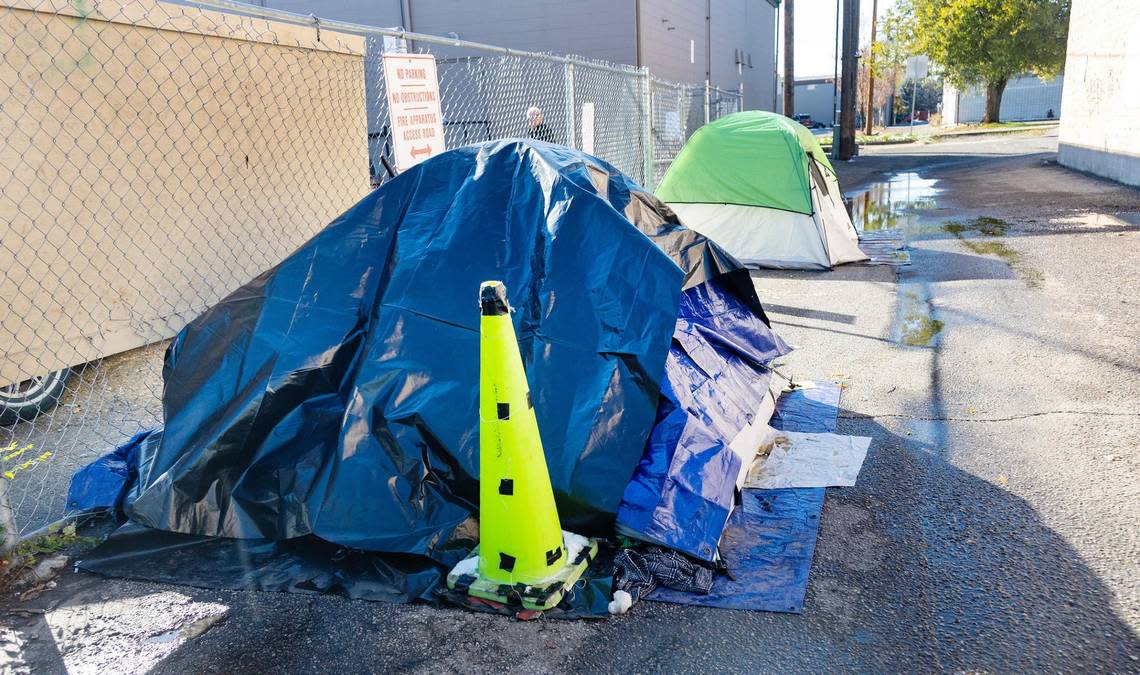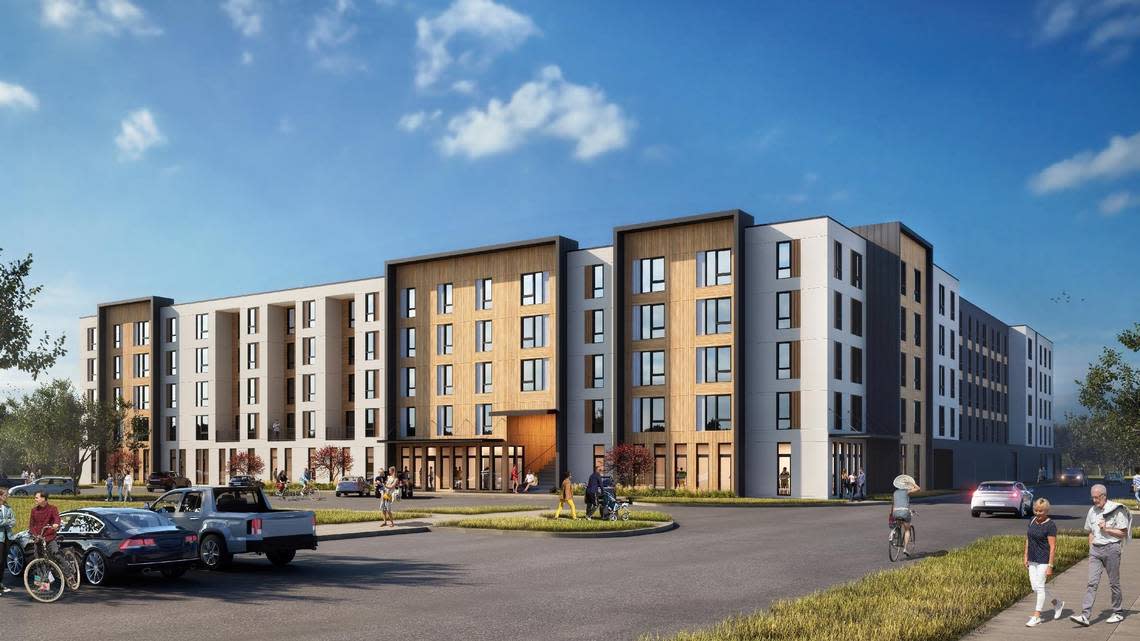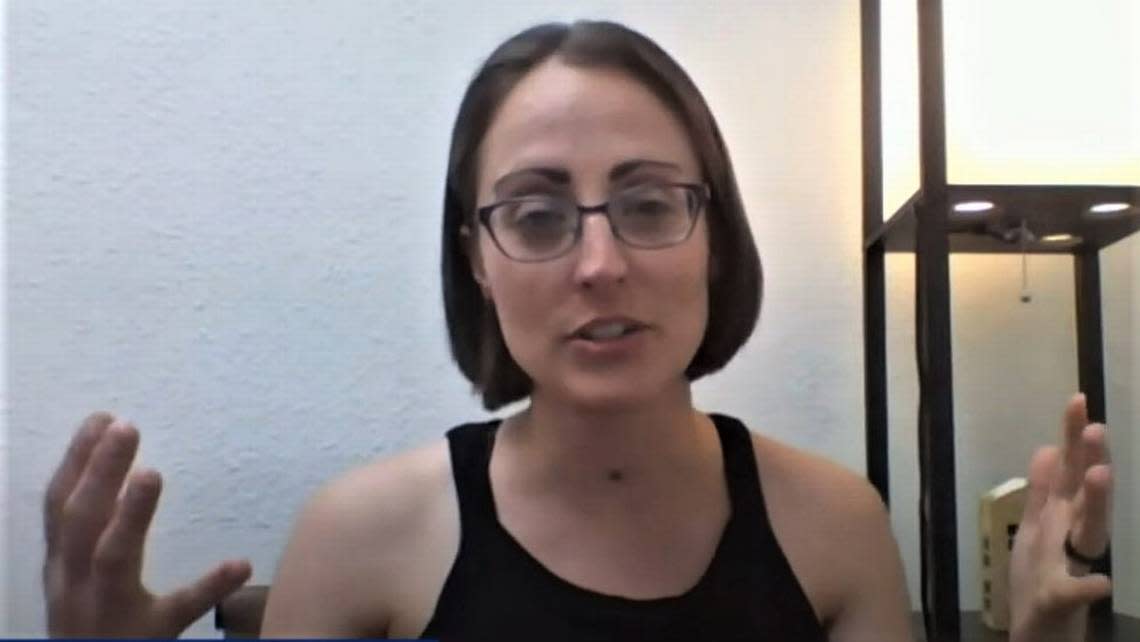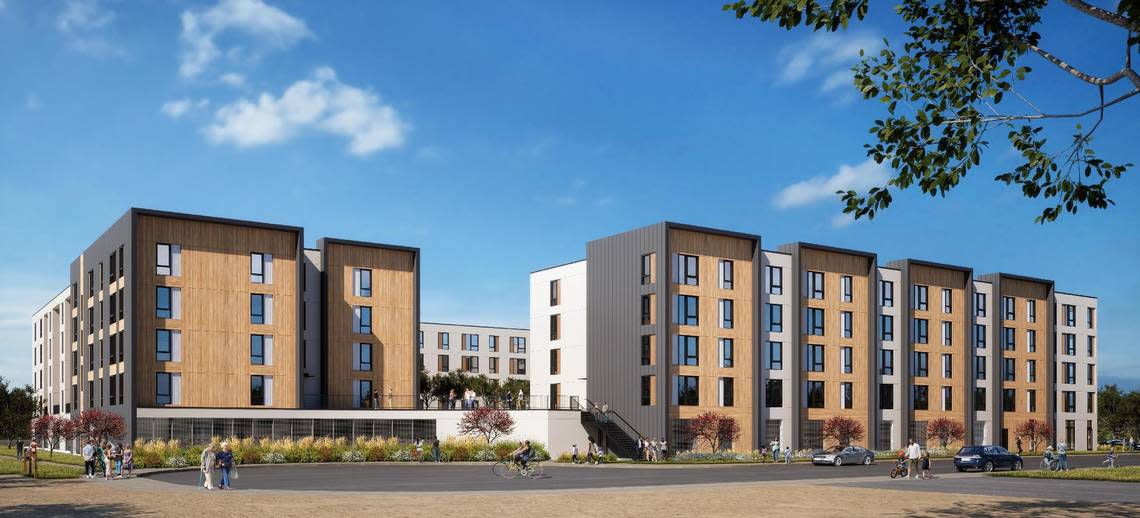Homelessness doubles in Boise, aid-group leader says: ‘We don’t want to become Portland’
Homelessness has surged in Boise, the leader of a homeless-services organization says.
The number of people experiencing homelessness in Boise has nearly doubled in the past 2½ years, said Stephanie Day, executive director of CATCH, or Charitable Assistance to Community’s Homeless, a Boise nonprofit that works to help people find stable housing and become financially independent.
The number of single people without homes has risen from about 300 at any given time before the start of the COVID-19 pandemic to about 600 now, Day told the Boise Planning and Zoning Commission. The number of families has risen from about 150 to about 250.

“I think the community is kind of sheltered from the crisis that we’re in right now, because Interfaith expanded its shelter services to the Red Lion, and they’ve been housing a lot of people in hotels,” Day told the commission on Monday.
She was referring to Interfaith Sanctuary, one of the Treasure Valley’s two largest homeless-shelter providers. Interfaith has been renting dozens of rooms at the Red Lion Inn Downtowner with federal and city money.
Day testified in favor of a proposed apartment building near Saint Alphonsus Regional Medical Center that would house low-income people earning as little as 30% of the area median income. That’s as little as $17,700 a year for a single person, according to the city’s income and affordable-rent guidelines.
Rent for such a person up to $443 per month is deemed affordable. For a four-person household, 30% of the median income is $25,250, and the maximum affordable rent is $631.
The median is the midpoint between the lowest and highest incomes.

Day said Boise needs more housing for low-income people to avoid the fate of major West Coast cities overwhelmed with homeless encampments.
“We don’t want to become Portland,” she said. “We don’t want to become Seattle. The availability of affordable housing is what drives homelessness numbers. So if we don’t aggressively build affordable housing, we will increase our homelessness numbers, which will impact the entire community.”

Neighborhood group opposes apartments for low-income people
The apartment building is proposed by two Boise-area developers, Pacific West Communities and Hawkins Co., to have 193 apartments at 6160 W. Denton St., just south of Emerald Street and about a fifth of a mile west of Curtis Road. The building would have four stories of apartments atop a ground-floor concrete parking podium.
If the state awards federal affordable-housing subsidies to the apartments as developers say they need to make the project feasible, the building’s rents would be aimed at people earning up to 80% of median income, with incomes averaging 60% of that income or less, the developers said in an application letter. The developers said they are willing to take part in the city’s Our Path Home initiative to house people experiencing homelessness.
The Liberty Park Neighborhood Association opposed the apartments. Association members testified that 76% of the neighborhood’s residents already are low-income, the highest share in Boise, with a median household income of about $35,000. About three-fourths of the neighborhood’s residents are renters, they said. More than half of the proposed building’s apartments are one-bedroom or studio units that would better fit near Boise State University, they said.
They also said the apartments would have insufficient parking, leading to more people parking on nearby streets.
But Shellan Rodriguez, a consultant representing the developers, said the site is as good as any in Boise. “If we can’t do dense, affordable housing here, I don’t know where else we could do it,” she said.
Planning and Zoning Commission members seemed to agree. “What’s not to like?” Commissioner Chris Blanchard said, shortly before commissioners unanimously approved the conditional-use permit required before the apartments could be built.
Rodriguez said the developers are still working to nail down financing, including the government subsidies. They hope to begin construction in spring or summer 2023 and open the finished building for leasing in late 2024.

Wages rise, but housing costs consume them
Day did not return a call seeking additional information about her comments to the commission. She did not say what caused the increase in local homelessness, though high rents have driven people out of housing, and researchers in Portland have said COVID-19 has contributed to the rise in homelessness there.
The annual, federally mandated “point-in-time” count of people experiencing homelessness in January found 620 unhoused individuals in Ada County, according to the Boise/Ada County Homeless Coalition.
In a forum on homelessness organized by the Idaho Statesman in May, Day said that five years ago, CATCH’s clients — who are usually renting the cheapest units they can find — were paying $650 per month in rent in Ada County and $535 in Canyon County. By May 2022, they were paying $1,027 in Ada County and $1,008 in Canyon County.
Five years ago, most CATCH clients earned $7.25 to $9 per hour, Day said in the forum. By 2022, that had risen to $12 to $14 per hour. A 40-hour-a week worker in a $14-an-hour job earns gross annual wages of $29,120. But the pay increases haven’t kept pace with housing costs.
What’s ‘affordable’ in a Boise apartment?
The city guidelines say Boise’s median income for a single person is $61,257, with rent deemed affordable up to $1,531 a month; and for a four-person household $87,500, with rent up to $2,188.
The 80% target means a single person could earn up to $47,150 and pay up to $1,179 in rent, or a four-person family could earn up to $67,350 and pay up to $1,684 in rent, under the guidelines.
A single person earning 60% of the median income, or $35,400, would pay up to $885 under the guidelines, while a four-person family earning $50,520 would pay $1,263.
100% of median income | ||
Household size | Annual gross income | Affordable rent |
1 person | $61,257 | $1,531 |
2 person | $70,026 | $1,751 |
3 person | $78,796 | $1,970 |
4 person | $87,500 | $2,188 |
80% of median income | (low income) | |
Household size | Annual gross income | Affordable rent |
1 person | $47,150 | $1,179 |
2 person | $53,900 | $1,348 |
3 person | $60,650 | $1,516 |
4 person | $67,350 | $1,684 |
60% of median income | (very low) | |
Household size | Annual gross income | Affordable rent |
1 person | $35,400 | $885 |
2 person | $40,440 | $1,011 |
3 person | $45,480 | $1,137 |
4 person | $50,520 | $1,263 |
30% of median income | (extremely low) | |
Household size | Annual gross income | Affordable rent |
1 person | $17,700 | $443 |
2 person | $20,200 | $505 |
3 person | $22,750 | $569 |
4 person | $25,250 | $631 |
